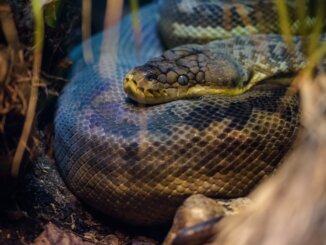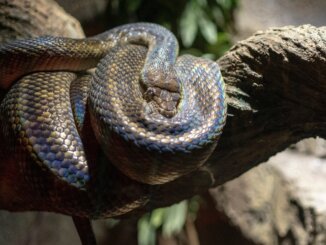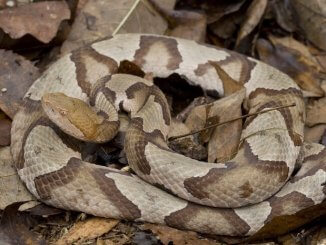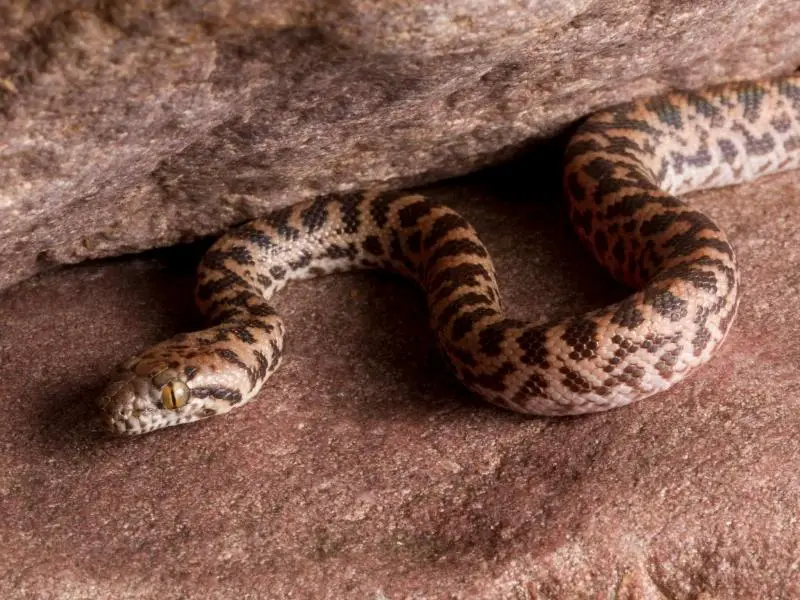
The children’s python is a small, light brown, nonvenomous snake from Australia. Children’s pythons are easy to care for because they’re docile and tolerant, and aren’t prone to many diseases.
Children’s Python Overview
| Common name | Children’s python |
| Scientific name | Antaresia childreni |
| Natural habitat | Coastal forests and woodlands in Australia |
| Adult size | 36–40 inches |
| Average lifespan | 15–20 years |
| Diet | Carnivore |
| Housing | Minimum 20 gallons, 80–90°F, 50%–60% humidity |
| Experience level | Beginner |
Origin
The children’s python (Antaresia childreni) is found in coastal forests, woodlands, grasslands, shrublands, and freshwater wetlands in the Northern Territory, northeastern Queensland, the extreme north in Western Australia, and some islands in the Torres Strait (a group of islands between Australia and the Melanesian island of New Guinea).
These snakes are nocturnal, so they’re more likely to be seen at night. Children’s pythons are nonvenomous and constrict their prey before swallowing it whole.
Appearance and Behavior
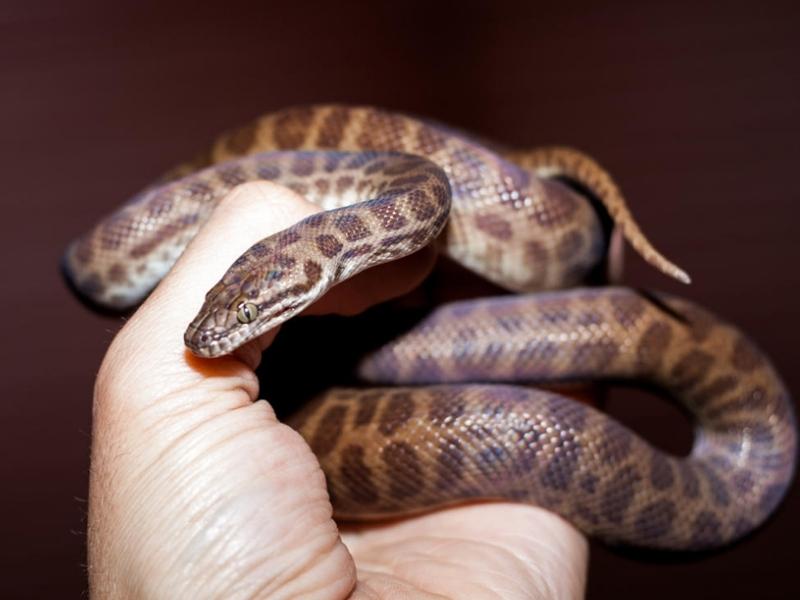
The children’s python has a slim body in cream, reddish-brown, light brown, and beige, with dark brown markings. The snake’s coloration allows it to blend in with its leafy, earthy, and sandy surroundings in the wild.
Young children’s pythons have bright skin and, as the snake grows and sheds, the skin becomes darker. Males and females have the same coloring and markings.
Size and Lifespan
Fully-grown children’s pythons reach 36–40 inches long. The snakes, smaller than most python species, are a manageable size for keeping as pets. Males and females grow to a similar length.
The average lifespan of a children’s python is 15–20 years. With the right care, some children’s pythons live up to 30 years.
Temperament
Children’s pythons are docile snakes that rarely bite or behave aggressively. However, the snakes aren’t social either and prefer to be housed alone.
Children’s pythons are tolerant and adaptable to their environment, although poor tank conditions over prolonged periods are known to stress the snakes.
This python species is safe to be handled by adults and responsible children.
Housing Children’s Pythons
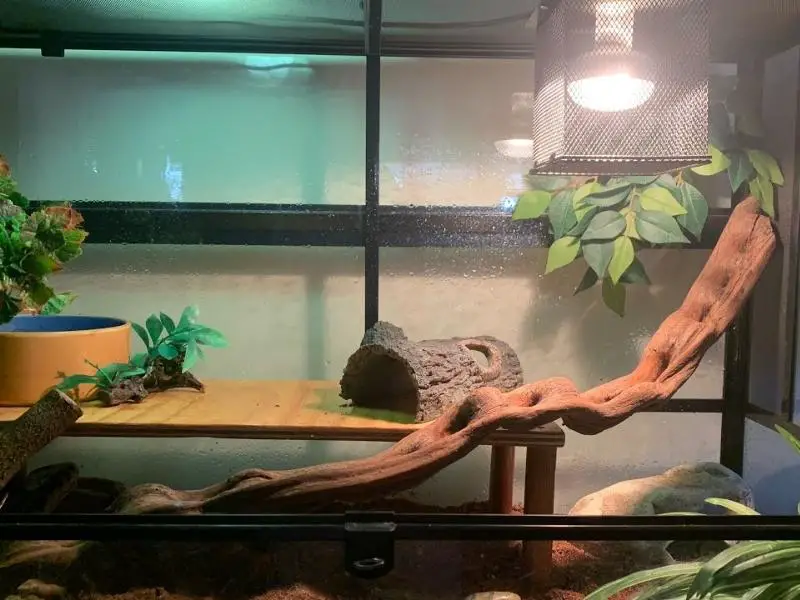
The natural habitat of the children’s python is dry, leafy woodlands, grasslands, shrublands, wetlands, and deserts in Australia. Provide a similar environment in captivity with a suitable substrate, the right temperature and humidity, and tank decorations. Keep children’s pythons in a wooden vivarium or a terrarium.
Enclosure size
The minimum size of an adult children’s python enclosure is 20 gallons, and a juvenile snake should be housed in a 10-gallon enclosure. Children’s pythons enjoy climbing branches, so the tank should be at least 24 inches high.
Lighting
Children’s pythons need standard lighting in their enclosures to mimic their natural day-to-night cycle. The snakes are nocturnal, so they don’t need UVB or UVA lighting as much as other reptiles, but installing this lighting will support the snakes’ health in captivity.
Install this lighting in the center of the enclosure, providing light throughout the entire space.
A basking lamp should also be installed in the enclosure’s dedicated basking spot. A halogen heat lamp is the best type of basking lamp for a children’s python.
Temperature and Humidity
The children’s python is ectothermic, meaning that it can’t regulate its own body temperature, and relies on its environment to warm up and cool down. Create a temperature gradient to allow the snake to travel to different parts of the enclosure when the animal feels too hot or too cold.
To create a temperature gradient, set up a basking area on one side of the enclosure with a heat lamp and an under-tank heat pad. The temperature of this area should consistently be 85–90°F. The other side of the tank should be 78–80°F, serving as a cool-down spot for the snake.
The enclosure’s humidity should be set to 50%–60%. If the humidity drops below 50%, the snake could struggle to shed its skin, which could potentially lead to health problems.
Use a mister or place a large water bowl in the tank to maintain consistent humidity levels. Buy a hygrometer to take twice-daily readings of the tank’s humidity.
Substrate and Decoration
Substrate helps maintain humidity levels, cushions the snake’s body, and gives the enclosure an attractive appearance. Cypress mulch, shredded bark, and coconut terrain are all suitable substrates for a children’s python.
Avoid sharp, scratchy substrates that could damage the snake’s body. Ensure the substrate is at least 2 inches deep and layer chemical-free leaf litter on the top to help regulate humidity.
Decorations provide an interesting environment and prevent boredom in the enclosure. Hiding places and caves, artificial plants offering shade, and ledges are good decorations to add to a children’s python enclosure.
Most snakes sleep on the substrate or on a branch and don’t need special bedding.
Cleaning
You should spot clean and deep clean a children’s python’s enclosure to prevent bacteria buildup and reduce the risk of disease.
Spot clean the tank by washing out the water bowl and removing waste and leftover food from the enclosure whenever you see it — at least once a day. Replace the removed substrate or bedding with clean substrate.
Deep clean the tank every two to three months. Remove all the decor and substrate and place the snake in a temporary tank. Fill the enclosure with clean, hot water with a drop of dish soap and scrub the surfaces with a sponge.
Clean the decor in a 10% bleach solution, then rinse with hot water. Let the enclosure and decorations dry before returning the snake.
Don’t use household cleaning chemicals to clean the enclosure because these are toxic to children’s pythons.
Children’s Python Care
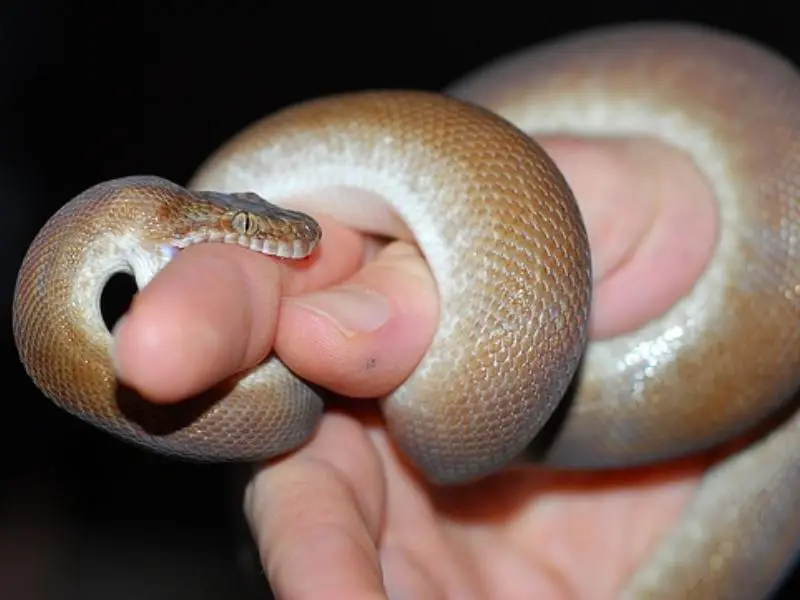
Children’s pythons are easy to care for as long as they’re housed in the right enclosure with a regulated temperature and humidity, and they’re fed a healthy, high-protein diet.
Food and Water
In captivity, children’s pythons eat mice and rats. Frozen, pre-killed prey is best because there’s no risk of it injuring the snake.
Young pythons need one pinky mouse per week, and full-grown adult pythons should be fed one large rat or mouse every two to three weeks.
Provide a bowl of fresh water, big enough for the snake to soak in, in the enclosure. Clean out the bowl and change the water once a day to prevent a buildup of dirt and bacteria.
Handling
Children’s pythons can be handled, but they don’t like being touched on the head. Loud noises and excitable behavior could stress the snake during handling, so only handle the snake in a quiet, calm environment.
To properly handle a children’s python, hold the snake with two hands, with one hand supporting the area behind the head, and one hand supporting the rest of the body. Only handle the snake for up to 10 minutes per day.
Don’t handle your snake within 24 hours of feeding to prevent the snake from regurgitating its food.
Common Health Issues
Children’s pythons are hardy snakes, but watch out for the following potential health issues.
Snake Mites
Snake mites are small parasites that feed off a snake’s blood and are a common problem for children’s pythons. If your python is spending a lot of time in its water bowl, and you notice black dots in the water, the snake likely has mites.
Mites reproduce quickly and drain a lot of blood, leading to lethargy and anemia. To treat snake mites, speak to your veterinarian about medications like Provent-A-Mite. Empty the enclosure and fill it with warm, soapy water to drown the leftover mites.
Respiratory Infections
Respiratory infections are caused by bacteria, viruses, fungi, and parasites. Signs of respiratory infection are mucus around the mouth, nasal discharge, loss of appetite, wheezing, lethargy, and gurgling noises during breathing.
Antibiotics are the most common treatment for respiratory infections. If the infection is caused by parasites or fungi, your veterinarian will prescribe tailored medications for treatment.
Breeding
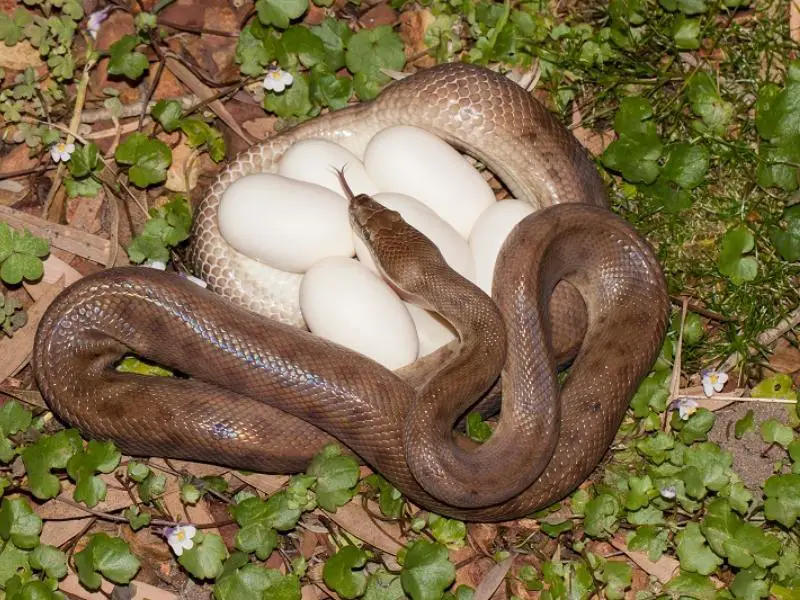
Children’s pythons are easy to breed in the right tank conditions. The snakes are sexually mature at two to three years old.
To breed a male and female children’s python, follow these steps:
- Place the snakes in one tank of at least 30 gallons
- Slowly lower the temperature over a period of two months until the cool end is about 73°F and the warm end is about 82°F
- The snakes will mate in the cool end of the tank. During this time, the male will refuse food, but the female should eat as normal
- When the snakes stop mating, gradually increase the temperature back to normal, and feed the snakes as usual. The male will feed, but the female won’t feed if she’s gravid (pregnant)
- The female will lay her eggs after about 90 days. Provide a nesting box lined with sphagnum moss for the female, with enough room for her to comfortably fit in
- When the female lays the eggs, remove them and incubate them at a temperature of 90°F in high humidity
- Check the eggs every week and remove black or moldy eggs. Within 60 days, the eggs should begin to hatch
- Carefully place the neonates (young pythons) in individual shoebox-sized enclosures. Offer the young snakes their first pinky mice after a week
- Once the snakes are feeding regularly, increase their enclosure size to 10 gallons
Choosing and Buying a Children’s Python
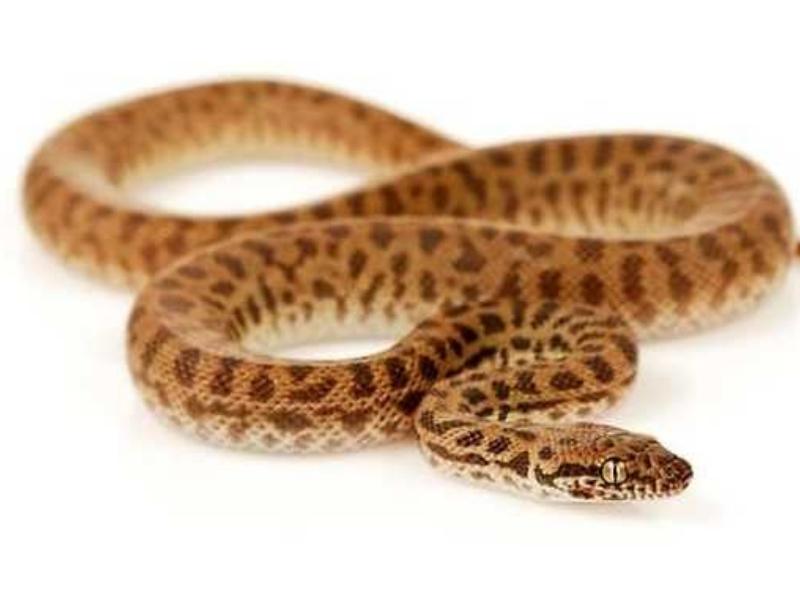
The cost of a children’s python is $250–$300 depending on the size and color of the snake. Children’s pythons are widely available in most pet stores, but you should buy from a reputable breeder to reduce the risk of health issues in the snake.
These pythons are easy to breed and have been bred in captivity for years, so there’s no need to catch wild snakes and sell them as pets.
When choosing a children’s python, look for signs of good health, including clear eyes, smooth skin, clean vents, and a well-muscled body. Don’t buy a snake that’s wheezing or has discharge around the eyes, nose, or mouth, because these are signs of poor health.

